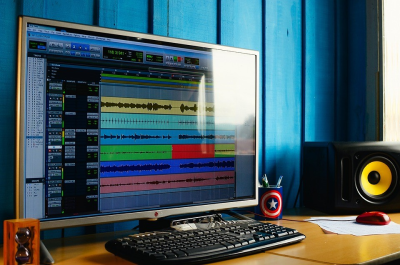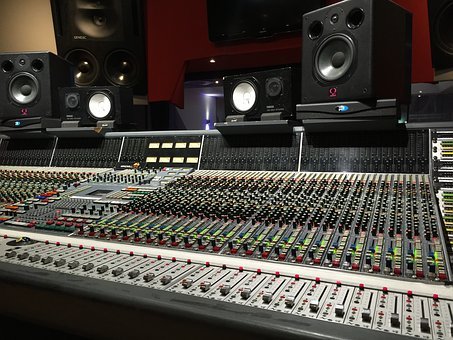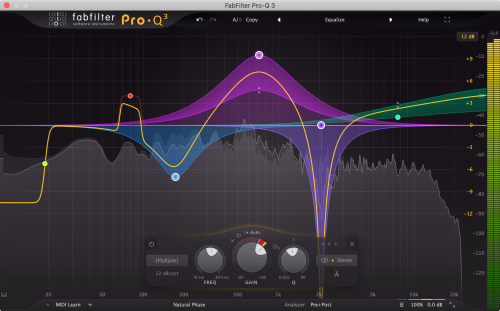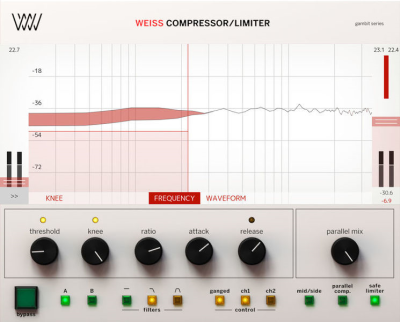5 Simple Tricks to Master Audio Mixing
Audio mixing is the process in which multiple sound sources (vocals, beats, instruments and additional elements) are combined and balanced to achieve a final stereo sound. Mastering your audio mixing skills requires lots of practice and persistence.
If you’re just starting out, then gear up – this article provides all the tips and tricks you need to master audio mixing.
Here are 5 simple tricks to master audio mixing:
1.Utilize your filters and EQs properly
One of the most essential audio mixing elements to master is EQs and filters. Good music, apart from having dynamic vocals, should consist of a variety of well-organized instrumentals and effects.
However, it’s important to maintain a balance among these elements so you can achieve smooth-sounding music. When mixing tracks, every single track should be filtered or equalized.
Since every song possesses a unique range of frequencies, it’s important to understand which particular frequency range is required when mixing audio tunes. It’s mandatory to utilize EQs and filters to avoid getting interfering frequencies.
One essential rule of thumb involves cutting all frequencies that you don’t require rather than boosting those you want to stick out. That way, you’ll have an easier time filtering out noisy frequencies later on.
If possible, you ought to cut out low-end frequencies and utilize a high-pass filter. This will provide sufficient room for your bass.
In addition, when you’re mixing mids and high frequencies, it’s important to use a high-pass filter when mastering your audio. Don’t neglect your EQs and filters – these will enhance your tracks and make them ready for mixing.
2.Learn how to use limiters
Many audio producers use limiters to control the signal gain to a specific level.
However, some audio enthusiasts might wonder: what is a limiter?
It’s a tool that compresses a signal level to a given threshold. A limiter prevents any audio signal from having an overpowering gain. It utilizes a compression ratio to achieve this and ratio is commonly set to 20:1.
Another impressive property of a limiter is safeguarding audio signals against peaking, which would otherwise cause the signal to become extremely loud or distorted. To mix audio perfectly, ensure that you understand how limiters work.
You must be wondering: what’s the best way to learn about audio limiters?
It’s quite simple: search online for an array of limiter plugins and download them. Next, practice using each limiter. Ensure that you change the settings and observe what happens.
This way, you’ll gradually become a pro at using limiters. These tools can prove quite useful when boosting the gain of your tunes.
But when you’re unsure about how limiters are used, it’s best to steer clear from using them. Limiters can ruin your masters and further cause your mixes to be wildly distorted. Have a look at the limiters available on Plugin Boutique
3.Use good quality headphones to reference and learn to use compressors

It’s important to get an accurate reproduction of sound when you’re mixing. Therefore, buying a pair of cheap, low-quality headphones just won’t cut it.
You ought to invest in high-end planar magnetic headphones that deliver high fidelity sound for professional use. Such headphones have a thin, light diaphragm that permits high sensitivity and accuracy.
However, most planar magnetic headphones are large and unsuitable for commuting – they’re typically designed for mixing and composing within the studio.
When mixing, you ought to pay keen attention to each and every frequency. High-quality headphones provide the best representation of high and mid-range frequencies.
The bass is also reproduced superbly, delivering a bright sound with rich vocals and zero harshnesses. In addition, you must understand how to utilize volume and compression.
However, if the gain of one track is very low compared to other tracks, then you ought to increase the volume. Knowing when to use a compressor is quite essential when you’re mixing.
4.Learn how to pan

You’ve probably come across the term panning but got confused about what it really means.
When it comes to mastering audio, panning refers to signal distribution from a stereophonic/monaural pair into the multi-channel stereo field.
Every good mix requires panning in order to sound good. Your track can sound quite tangled and messy if you leave everything right at the center.
Panning should involve dragging instruments on one side, to provide a dynamic sound. However, instruments that possess extremely low frequencies should remain in the middle.
When the panning process is completed, it’s important to listen to your track’s mono version. That’s because a majority of club stereo systems utilize mono signals.
Ensure you understand how to pan a track using a pan pot or panning software. When mixing, it’s also important to check whether there are issues with the phase. Such issues can occur when two tracks play the same instruments or the same beats concurrently.
This poses a huge problem when these overlapping sounds misalign slightly. At specific frequencies, they could start canceling each other out and sounding thin. To fix this issue accurately, you ought to manually align all the track transients – the troughs and peaks of both tracks should align perfectly.
5.Include some additional elements in your mix

If you want to create an exquisite mix that attracts most people’s attention, then you need to include extra elements.
This will provide some oomph to your mix that’ll captivate listeners, especially if most of the included tracks are parched.
Try spicing things up by adding a shaker or tambourine in the mix. Such effects, despite looking simple, can enhance the groove and accentuate the pulse of your tracks. You can also experiment with a variety of elements to see which one works best. It's always worth checking the Loopmasters sale section to see what's on offer too.
Despite their track-enhancing properties, percussions shouldn’t be used in a carefree manner. Add them to some tracks and ensure they’re not too loud.
Also, ensure that you listen to your newly created mix using conventional listening devices that most people utilize. This will provide an accurate replica of how the mix will sound through the ears of fellow audiophiles.
Conclusion
Remember, the quality of your audio mix will only be as good as you make it. Therefore, invest more time and resources into creating an exciting, beautifully arranged mix that your audience will enjoy.
Hope you guys found these audio mixing tricks helpful. Written by Jennifer Webster











